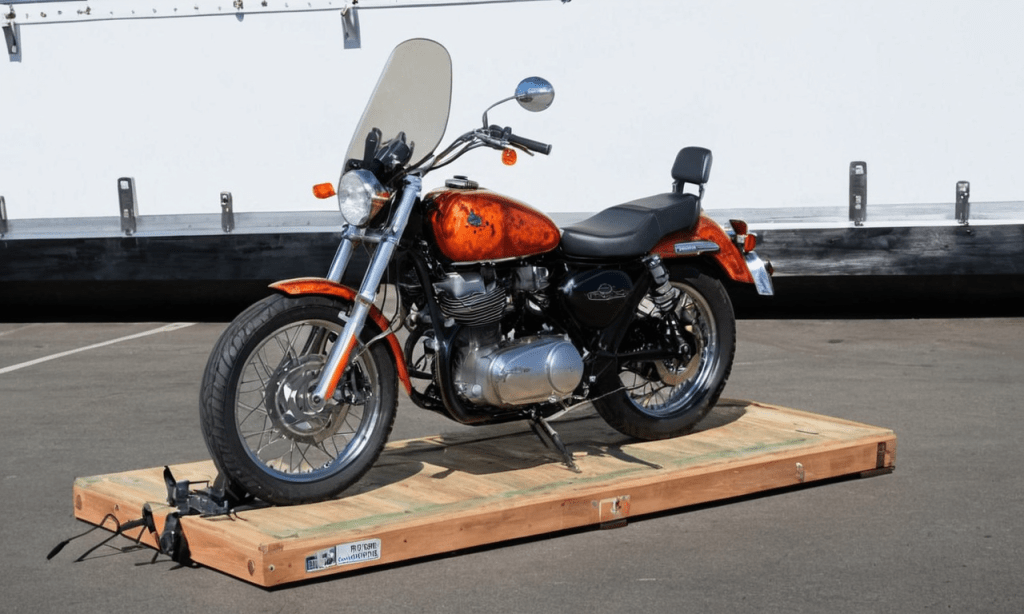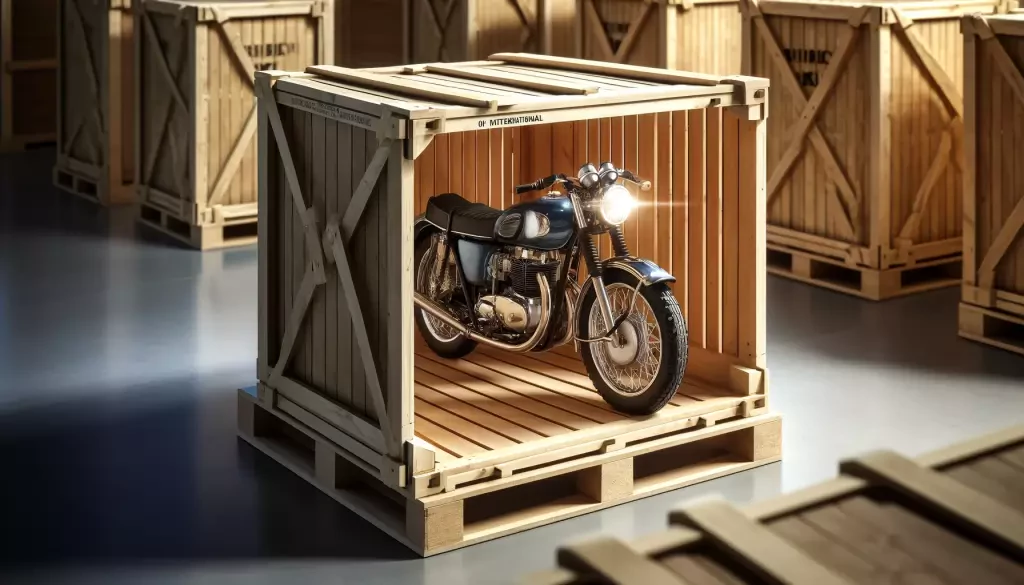
Understanding how to transport a motorcycle can save you time, money, and a lot of stress. Motorcycles, unlike cars, require special consideration because of their size and shape. As we explore the easiest ways to transport a motorcycle, let's consider convenience, security, and cost. Whether you're a weekend rider or a cross-country adventurer, this article will guide you through the options available for safely relocating your motorcycle.
Using a motorcycle carrier
Motorcycle carriers are devices designed to hold a motorcycle securely during transport. These carriers attach to the rear hitch of a vehicle, such as a truck or van, essentially allowing the vehicle to "carry" the motorcycle outside rather than hauling it inside a space-limited area. When prepping the motorcycle for transport, you should ensure that the carrier is suitable for the type of motorcycle you're transporting—whether it's a hefty cruiser or a lightweight dirt bike. The type of carrier may also vary, ranging from simple racks to more advanced versions with built-in wheel chocks that provide greater stability.

Attaching the carrier to a truck or van
The installation process of a motorcycle carrier begins with ensuring that the towing vehicle is equipped with the appropriate class of hitch receivers. Then, the carrier must be assembled according to the manufacturer’s instructions.
Once the carrier is attached, it should be tested for firmness and absence of excessive play or wobble. Your vehicle's suspension must be able to handle the added weight of the motorcycle and carrier, so check the gross vehicle weight rating of the towing vehicle and ensure it's not exceeded.
Benefits of using a motorcycle carrier
Motorcycle carriers offer several benefits over other motorcycle transport options:
- Safety: Motorcycle carriers are designed to secure the motorcycle firmly during transit, reducing the risk of damage. Wheel chocks and tie-down straps hold your bike steady, minimizing movement and protecting it against road debris.
- Convenience: Carriers allow for easy loading and unloading of the motorcycle. Many models come with a motorcycle ramp, simplifying the process and eliminating the need for additional lifting equipment.
- Cost-Effectiveness: Motorcycle carriers eliminate the need to rent or purchase a larger motorcycle trailer, potentially reducing the overall motorcycle transport costs.
- Protection from Elements: Enclosed carriers offer additional protection from the weather, keeping the motorcycle shielded from rain, snow, and sun exposure.
Using an enclosed motorcycle trailer
Transporting your motorcycle in an enclosed trailer is an option many riders favor due to its numerous benefits. The enclosed nature of the trailer not only provides great protection against weather and road debris and adds a layer of security against theft or vandalism that open trailers cannot match.
Regarding motorcycle shipping costs, although an enclosed trailer might represent a higher upfront investment or rental fee, the benefits often justify the cost. The additional protection can lead to long-term savings by avoiding costly repairs from potential transport damage.
How to properly load and secure your bike in the trailer
Loading and securing a motorcycle in an enclosed trailer requires careful attention to ensure safe transport. Having a quality motorcycle ramp for the loading process is crucial. The ramp should be sufficiently rated for the weight of the motorcycle for transport and should provide a secure and stable pathway into the trailer.
Once the motorcycle is in the trailer, use wheel chocks to stabilize the front wheel. Position the motorcycle in the trailer's center to maintain balance and stand upright. Secure the motorcycle using ratchet tie-downs or straps attached to designated anchoring points within the trailer. It is important to use soft loop straps around the motorcycle's frame or handlebars to avoid any scratches or damage to the bike.
After the front is secured, attach additional tie-downs to the rear tire or frame, ensuring that they pull the motorcycle forward and downward, countering any movement. Avoid bungee straps, as they may not provide consistent tension during transport.
Consider obtaining insurance coverage specific to the motorcycle's transport to offer financial protection in the event of unforeseen incidents.
Using a pickup truck
Using a pickup truck is a commonly preferred motorcycle transport option for individuals who need to move their bikes across short to moderate distances. Many riders find this method convenient because it allows them the flexibility to transport their motorcycle on their schedule. The key advantage of using a pickup truck lies in the ease of loading and the ability to ensure the bike's security during transport. A pickup truck bed can accommodate most motorcycles, from lightweight dirt bikes to heavier road machines, making it a versatile choice for motorcycle transport.
Tips for safely transporting a motorcycle in a pickup truck
To transport your motorcycle safely using a pickup truck, follow these important tips:
- Check the Laws: Confirm that you comply with local transport laws and regulations.
- Use Quality Ramps: Invest in a high-quality motorcycle ramp designed for your motorcycle's weight and ensure it is secured to the tailgate to prevent slippage.
- Employ Multiple Straps: Use a combination of ratchet and soft loop straps to secure the motorcycle from different angles, minimizing movement.
- Insurance Coverage: Check your insurance policy to ensure adequate coverage for the motorcycle during transit.
- Weather Considerations: Protect your motorcycle from road debris and weather elements, which may require additional coverings or an enclosed trailer for longer trips.
Adhering to these tips will reduce the risk of damage and ensure that your motorcycle reaches its destination safely.
Hiring a motorcycle shipping company
When transporting a motorcycle over long distances where driving is not feasible, hiring a motorcycle shipping company can be the easiest solution. Motorcycle transport companies offer specialized services to move your bike safely and securely, taking the responsibility off your shoulders. Options range from open trailers to more secure and protected enclosed trailers. Many companies also provide insurance coverage to safeguard against potential damage during transit.
Researching and choosing a reliable motorcycle shipping company
The key to a successful motorcycle shipment is to research and select a trustworthy motorcycle shipper. Begin by looking for companies specializing in motorcycle transport services with positive reviews from past clients. Motorcycle shipping quotes can vary, so request estimates from multiple providers and evaluate their services, reputation, and motorcycle shipping rates before making a final decision.

Cost of shipping a motorcycle
The price of motorcycle shipping can be influenced by several factors, such as the distance of transport, the type of service chosen (open or enclosed trailer), the motorcycle's size and weight, and the time of year.
Gather motorcycle shipping quotes from various shippers, consider your motorcycle's value, and choose the service that provides the best balance between cost and service quality.
Final Thoughts on Motorcycle Transportation
In conclusion, transporting a motorcycle requires careful consideration to ensure its safety and protection during transit. If you're looking to transport your bike over long distances, hiring a specialized motorcycle shipping company is often the easiest and most convenient solution. By researching and choosing a reliable shipper and considering the cost factors, you can ensure a smooth and worry-free transportation experience. Remember, the goal is to ensure your motorcycle reaches its destination safely, so take the necessary precautions and enjoy the ride.
Looking for motorcycle transportation? At A-1 Auto Transport, we guarantee hassle-free shipping for affordable prices. Get trackable deliveries and excellent customer service while getting your bike where it needs to go.
Get your free shipping quote today!






 Share on Facebook
Share on Facebook Share on LinkedIn
Share on LinkedIn Share on Twitter
Share on Twitter




 Google
Google  Instagram
Instagram  Trustpilot
Trustpilot 



